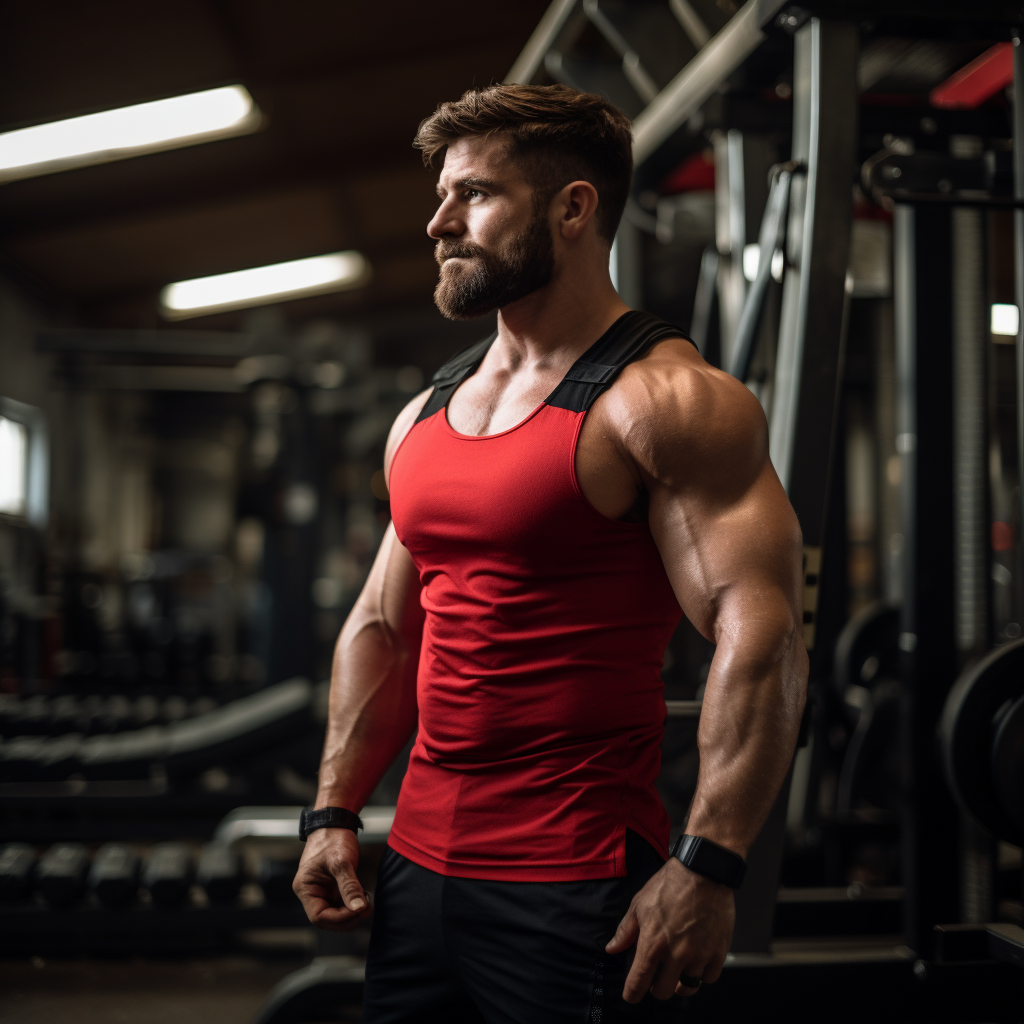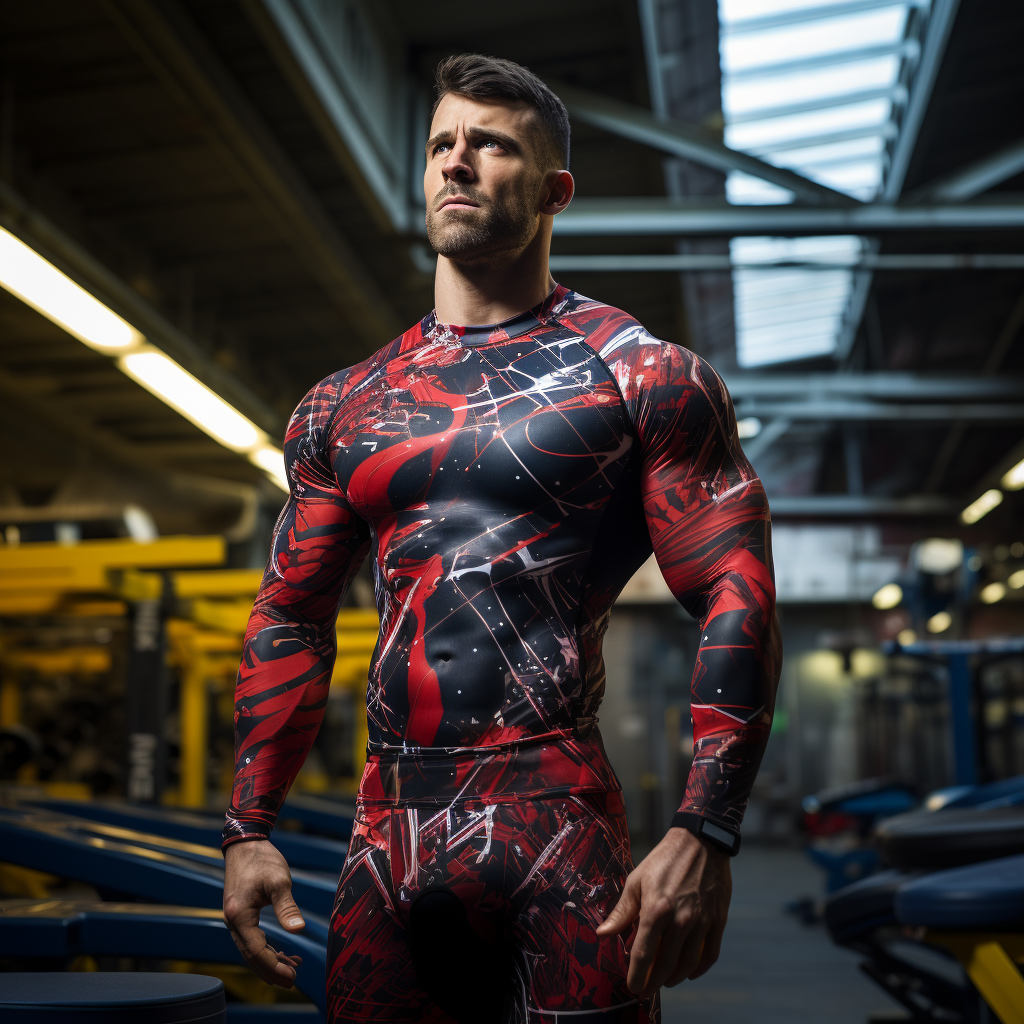Why China Dominates the Fitness Clothing Manufacturing Industry


Fitness has seen a global upsurge in the last few years, prompting a heightened demand for fitness clothing. While options are numerous, manufacturers often turn their eyes toward China. From small startups to established sportswear brands, China has become the go-to destination for sourcing and manufacturing fitness attire. But why is this the case?
The reasons are multifold. From quality assurance to cost advantages, from technological edge to efficient supply chains, China ticks many boxes. This article dives deep into the intricate factors that make China a hotbed for fitness clothing manufacturing, with each subsequent chapter exploring one aspect in meticulous detail. By the end of this exploration, you'll gain a comprehensive understanding of why China has garnered this special attention in the realm of fitness apparel production.
The Rise of the Chinese Manufacturing Industry
China's ascendancy as a manufacturing powerhouse didn't happen overnight. The nation's economic reforms, which began in 1978, set the stage for an unprecedented manufacturing boom. According to data from the World Bank, China's manufacturing output in 2019 accounted for nearly 28% of total global manufacturing, indicating a dominant position.
Pioneering in Policy Reforms
One of the pivotal moments in China's manufacturing history was its "Open Door Policy," which encouraged foreign investments and technological transfers. This laid a strong foundation for the manufacturing sector, creating a favorable environment for both domestic and foreign companies.
An Ocean of Opportunities
China's economic strategies have been aligned with attracting investments in the manufacturing sector. Special Economic Zones (SEZs) were established to provide tax benefits and better infrastructure for manufacturing units. This was a major attraction for companies looking to produce cost-effective, high-quality fitness clothing.
Beyond Textiles: A Multi-Sector Surge
China's manufacturing strength extends beyond textiles. The country is also a leader in producing electronics, machinery, and chemicals. This diversified manufacturing ecosystem provides a robust infrastructure that fitness clothing manufacturers can tap into. For instance, the availability of high-tech synthetic fabrics or smart clothing technology is a significant advantage.
Key Takeaways
Understanding China's manufacturing history provides the initial context for its present-day appeal in the fitness clothing industry. A blend of policy reform, favorable conditions, and sector diversification makes it an obvious choice for manufacturers seeking to strike a balance between quality and cost.
By aligning policies to attract global partners and investing in state-of-the-art manufacturing facilities, China has cemented its status as a manufacturing leader—a status that extends into the niche of fitness clothing.
Quality Control and Standardization
When consumers purchase fitness clothing, they expect garments that are both durable and comfortable, qualities that are indispensable for high-performance activities. China's robust quality control mechanisms and commitment to standardization make it a leading choice for brands that don't want to compromise on quality.
International Quality Standards
China adheres to international quality standards such as ISO (International Organization for Standardization) in manufacturing processes. This ensures a level of reliability that appeals to global businesses. The General Administration of Quality Supervision, Inspection, and Quarantine of the People's Republic of China (AQSIQ) is a regulatory body that oversees quality, inspection, and quarantine, providing another layer of assurance.
Regular Audits and Checks
Manufacturing plants in China often undergo regular audits to ensure that they meet both local and international regulations. These audits check for material quality, labor conditions, and environmental impact, making it a comprehensive evaluation. According to the China Quality Certification Center, the country performed over 25,000 quality audits in 2019 alone.
Customization and Adaptability
Chinese manufacturers have the capability to adapt to different materials, patterns, and production techniques. This flexibility allows them to cater to diverse brand requirements in the fitness clothing sector. Whether it's sweat-wicking materials for running gear or breathable fabrics for yoga attire, China's production facilities are equipped to handle a broad spectrum of needs.
Key Takeaways
Quality is a non-negotiable factor in fitness clothing, and China's rigorous standards provide a sense of reliability that's hard to overlook. With established quality control systems and adaptability to diverse needs, it's clear why China stands as a compelling choice for quality-conscious fitness apparel brands.
By meticulously adhering to established norms and investing in constant improvements, China provides a competitive edge in an industry where quality is as critical as aesthetics.

Cost-Effectiveness and Economies of Scale
When it comes to manufacturing, cost remains a crucial determinant for most businesses. China's economic infrastructure offers unique advantages that make large-scale production financially viable. But it's not just about low costs; it's about achieving cost-effectiveness while maintaining high quality, a delicate balance that China has mastered over the years.
Labor Costs
While labor costs in China have been rising, they remain competitive compared to many Western countries. According to a study by the International Labour Organization (ILO), the average manufacturing labor cost in China was approximately $5.2 per hour in 2020, considerably lower than countries like the United States or Germany.
Infrastructure
China has heavily invested in its infrastructure, from ports and highways to telecommunications. The World Bank estimates that China spent up to 8.3% of its GDP on infrastructure between 1992 and 2011. This superior infrastructure helps in reducing logistic costs and improving efficiency.
Economies of Scale
The sheer scale of China's manufacturing capabilities allows for mass production, which in turn reduces the cost per unit. This is a vital advantage for fitness clothing brands that operate on thin margins. Economies of scale also enable manufacturers to experiment with a wide variety of materials and designs without significantly affecting overall costs.
Raw Materials
China's proximity to raw material suppliers offers yet another financial advantage. The country is one of the largest producers of textiles, accounting for around 37% of the global output, according to the National Bureau of Statistics of China. This abundant availability translates to lower costs and shorter lead times.
Key Takeaways
In an industry as competitive as fitness clothing, cost-efficiency can be the differentiator between success and failure. China's competitive labor rates, state-of-the-art infrastructure, and economies of scale create a financial environment conducive to cost-effective, high-quality production.
The ability to produce at scale while keeping costs in check gives China a significant edge. As a result, businesses find it financially sensible to manufacture fitness apparel in China, aligning both quality and affordability.
Technological Advancements
In today's fast-paced world, staying ahead in the technology game is more than just an advantage—it's a necessity. The rise of 'smart' fitness clothing, embedded with sensors for tracking biometrics like heart rate and body temperature, exemplifies the pivotal role technology plays in the modern fitness apparel industry. China is at the forefront of these technological innovations, offering a potent blend of traditional textile craftsmanship and cutting-edge tech.
R&D Investments
China is a global leader in research and development spending. According to the National Bureau of Statistics of China, the country invested approximately $378 billion in R&D in 2019, marking a 12.5% increase from the previous year. These investments find their way into manufacturing sectors, including fitness apparel.
Fabric Innovation
Whether it's moisture-wicking fabrics, UV-resistant materials, or anti-microbial finishes, Chinese manufacturers often lead in fabric technology. With advanced textile engineering capabilities, they can produce fitness clothing that not only looks good but also enhances athletic performance.
Automation and Robotics
Automation is another area where China excels. In 2020, the International Federation of Robotics reported that China accounted for about 45% of total global robot installations. This level of automation speeds up the manufacturing process and ensures precision, a critical factor for producing high-quality fitness apparel.
Integration of Smart Technology
Wearable technology is becoming increasingly popular in fitness clothing. China's strength in electronics manufacturing gives it a unique edge in seamlessly integrating smart technology into apparel, from heart rate monitors to GPS trackers.
Key Takeaways
China's technological prowess is an amalgamation of advanced R&D, innovative fabric engineering, automation, and the ability to integrate smart technologies. This puts the country in a unique position to offer technologically advanced fitness clothing that meets the diverse and evolving needs of global consumers.
For fitness apparel brands, China's technological capabilities provide an opportunity to create products that are not just fashionable, but functionally advanced. As consumer expectations continue to evolve, staying technologically ahead is imperative, making China an ideal choice for forward-looking manufacturers.
Supply Chain Efficiencies
Supply chain management is the backbone of any manufacturing endeavor. China's well-oiled supply chain ecosystem is among the world's most efficient, offering a level of integration and coordination that appeals to fitness apparel brands aiming for agile and responsive operations.
Port Infrastructure
China is home to seven of the world's top 10 busiest container ports, including Shanghai and Shenzhen, according to the World Shipping Council. These ports enable quick and efficient transportation of goods, cutting down lead times and reducing costs for manufacturers.
Vendor Relationships
China's vast manufacturing landscape allows for better choices when it comes to picking suppliers and vendors. Whether it's textile suppliers or hardware providers for smart clothing tech, strong vendor relationships translate to smoother operations and better pricing.
Just-in-Time Manufacturing
The concept of Just-in-Time (JIT) manufacturing, which aims to produce goods exactly when they're needed, minimizing inventory costs, has been well-incorporated into China's manufacturing philosophy. A report by McKinsey & Company stated that JIT implementation led to a 12% to 15% cost reduction for several Chinese manufacturing firms.
Data-Driven Decision-Making
With advancements in Internet of Things (IoT) and Artificial Intelligence (AI), data analytics plays a significant role in supply chain optimization. China's integration of these technologies into manufacturing logistics provides real-time insights, enabling proactive decision-making and reducing potential bottlenecks.
Key Takeaways
A well-organized, technologically advanced supply chain system adds another layer to China's appeal for fitness apparel manufacturing. From world-class ports to effective JIT practices, China's supply chain efficiencies offer a competitive advantage that's hard to ignore.
These efficiencies not only minimize operational disruptions but also lead to faster market entry, a crucial factor for fitness clothing brands in an industry marked by rapidly changing trends.

Intellectual Property and Regulatory Environment
For many businesses, particularly those in design-driven sectors like fitness clothing, protecting intellectual property (IP) is a primary concern. The common narrative suggests caution when dealing with IP in China, but the reality is far more nuanced. China has made strides in strengthening its IP laws and improving the regulatory environment to attract more foreign businesses.
IP Law Reforms
China has been continuously updating its IP laws to align with international norms. The country's accession to the World Trade Organization (WTO) in 2001 mandated compliance with the Agreement on Trade-Related Aspects of Intellectual Property Rights (TRIPS), resulting in significant IP law reforms.
Local Partnerships and Collaboration
Many companies opt for joint ventures with local Chinese firms to navigate the regulatory landscape more efficiently. These partnerships often involve knowledge exchange and can offer an additional layer of IP protection.
Enforcement Mechanisms
Contrary to popular belief, China has established effective mechanisms for IP enforcement. The country has specialized IP courts, and according to the World Intellectual Property Organization (WIPO), China was the largest user of the Patent Cooperation Treaty (PCT) system in 2019, filing 58,990 applications.
Due Diligence is Key
While China has made progress, it's crucial for foreign businesses to conduct thorough due diligence. Leveraging local expertise, either through legal consultation or partnerships, can mitigate risks associated with IP and regulatory compliance.
Key Takeaways
China's efforts to create a more transparent and effective IP protection system have not gone unnoticed. These advances are especially important for industries like fitness clothing, where design and technology are often unique selling points.
However, due diligence remains crucial. Companies need to understand the legal landscape, possibly through local partnerships, to minimize risks and take advantage of China's growing commitment to IP rights and regulatory compliance.
Skilled Labor and Expertise
Quality manufacturing isn't merely a product of machinery and raw materials; it equally relies on the skillset and expertise of the workforce involved. China's massive pool of skilled labor, especially in the textile and apparel sector, is another cornerstone that cements its status as the first choice for fitness clothing manufacturing.
Technical Education and Training
Chinese educational institutions offer specialized courses focusing on textile engineering, garment manufacturing, and industrial design. Programs like these prepare students for highly skilled roles in the manufacturing sector. According to China's Ministry of Education, more than 25 universities offer textile and garment-related specializations.
Experience and Craftsmanship
Chinese artisans and workers bring decades, sometimes centuries, of traditional textile and garment-making expertise to the table. This knowledge adds an unmatched depth of quality to even the most modern fitness apparel designs.
Government Incentives
The Chinese government provides numerous incentives to attract skilled labor into the manufacturing sector. These range from tax benefits to subsidized training programs. According to the Asian Development Bank, such initiatives have led to a 10% annual increase in skilled labor in the manufacturing sector from 2010 to 2020.
Worker Productivity
Highly skilled labor also contributes to worker productivity. According to a 2020 report by the Conference Board, China's manufacturing sector saw a 6.8% increase in productivity, outpacing many Western countries. This level of productivity contributes to shorter lead times and cost-efficiency.
Key Takeaways
Skilled labor is a vital resource, offering a blend of traditional craftsmanship and modern technical expertise. This symbiosis plays a key role in the production of high-quality fitness apparel that meets both functional and aesthetic standards.
From specialized education and extensive experience to government incentives that attract talent, China's skilled labor pool stands as one of its greatest assets in maintaining its leadership in the fitness clothing manufacturing industry.
Conclusion and Future Outlook
As we've explored throughout this comprehensive analysis, China's position as the go-to destination for fitness clothing manufacturing is no accident. From its unmatched economies of scale and technological advancements to its efficient supply chain and skilled workforce, the country offers an array of compelling advantages for businesses in the sector.
Adapting to a Changing Landscape
Despite its current prowess, China is not resting on its laurels. The country is continually evolving its practices to meet the challenges of an ever-changing global economic landscape. As sustainability and ethical manufacturing gain more focus, China is also making strides in these areas, making it more appealing for businesses with a socially conscious ethos.
Flexible and Agile
One of China's strengths lies in its ability to adapt. Whether it's integrating the latest smart technologies into clothing or navigating a complex regulatory landscape, flexibility is a key feature of China's manufacturing environment.
Long-Term Relationships
For businesses looking to manufacture fitness clothing, China offers more than just a transactional relationship. Its evolving capabilities, deep-rooted expertise, and focus on innovation make it a long-term partner capable of growing alongside your business.
Key Takeaways
While there are challenges and considerations, the overall advantages of manufacturing fitness apparel in China are hard to ignore. Its multi-faceted strengths—from cost-efficiency and technological prowess to skilled labor and robust supply chain—make it a compelling choice for businesses aiming for long-term success in the competitive field of fitness clothing.
In summary, China’s vast and integrated ecosystem provides a fertile ground for the manufacturing of fitness apparel, offering a unique blend of quality, innovation, and efficiency. As the industry continues to evolve, it's likely that China will adapt and innovate, maintaining its position as the first choice for fitness clothing manufacturers worldwide.
Frequently Asked Questions (FAQs)
Q1: Why is China a popular choice for fitness clothing manufacturing?
Answer: China offers a range of advantages such as economies of scale, technological innovation, efficient supply chains, and a skilled labor force, making it a compelling choice for fitness clothing manufacturing.
Q2: What role does technology play in China's fitness clothing industry?
Answer: China is at the forefront of technological advancements, investing heavily in R&D. This allows for innovative fabrics, automation, and the integration of smart technology in fitness clothing.
Q3: How does China manage to keep manufacturing costs low?
Answer: Economies of scale, coupled with efficient supply chain systems and access to abundant raw materials, allow China to offer cost-effective manufacturing solutions without compromising on quality.
Q4: Is Intellectual Property safe when manufacturing in China?
Answer: While caution is advised, China has been improving its IP laws and enforcement mechanisms. Due diligence and local partnerships can offer additional layers of protection.
Q5: Does China offer environmentally friendly manufacturing options?
Answer: As sustainability becomes more crucial, many Chinese manufacturers are adapting their practices to be more eco-friendly, though the degree may vary from one manufacturer to another.
Q6: What types of fitness clothing can be manufactured in China?
Answer: China’s diverse manufacturing capabilities allow for a wide range of fitness clothing, from basic activewear to high-tech, smart fitness garments.
Q7: How has China's skilled labor impacted the quality of fitness clothing?
Answer: Skilled labor in China, backed by specialized education and traditional craftsmanship, contributes to high levels of quality and innovation in fitness clothing.





-500x500.jpg)
-500x500.jpg)
-500x500.jpg)
-500x500.jpg)
-500x500.jpg)